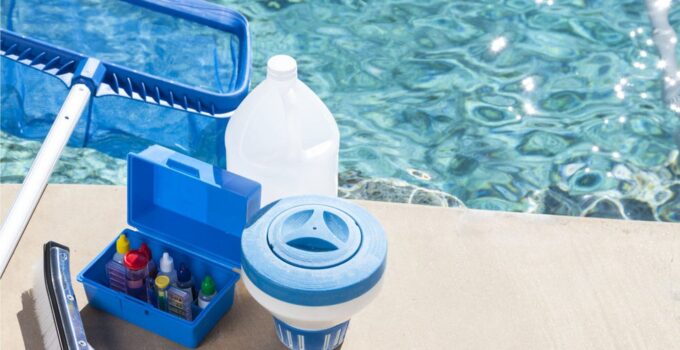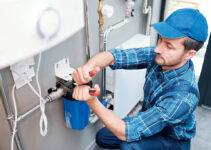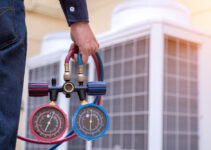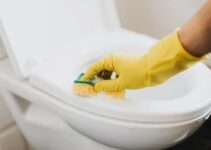Maximizing your pool’s clarity is a vital aspect of pool maintenance. The clarity of your pool water is not just a matter of aesthetics, but also of health and safety. A crucial element in maintaining this clarity is the proper cleaning and maintenance of your pool filter. This article will provide comprehensive insights into how to keep your pool’s filter in top condition, ensuring crystal-clear water.
Understanding the Role of Your Pool Filter
Before we dive into cleaning techniques, it’s essential to understand what your pool filter does. The filter is the heart of your pool’s circulatory system. It removes impurities, such as dirt, leaves, and even small debris, from your pool water. These impurities, if not filtered out, can make your pool water cloudy and unsafe for swimming. Check out pool cleaning Sacramento, CA and learn more about pool filters and the change interval.
Types of Pool Filters
There are three main types of pool filters: sand, cartridge, and diatomaceous earth (DE) filters. Each type has its own specific cleaning requirements.
- Sand filters trap dirt and debris as water flows through a bed of sand. Over time, the sand becomes clogged, reducing the filter’s efficiency.
- Cartridge filters use a paper-like cartridge to remove and keep the debris from the water. These filters can trap smaller particles than sand filters.
- DE filters are similar to sand filters but use diatomaceous earth to filter out even finer particles.
Regular Inspection is Key
Regularly inspecting your filter is the first step in maintaining pool clarity. Check for signs of wear and tear, and make sure the filter’s components are in good working order. This includes checking the pressure gauge, valves, and other parts for any damage or leaks.
Maintaining Optimal Water Balance

Source: randrswimmingpools.com
Before cleaning your filter, ensure the water chemistry is balanced. Unbalanced water can harm your debris catcher and reduce its effectiveness. Check the pH, alkalinity, and sanitizer levels. Ideal pH levels should be between 7.2 and 7.8, and alkalinity between 80 and 120 parts per million.
Cleaning Sand Filters
Backwashing is the primary method for cleaning sand filters. This process involves reversing the flow of water through the filter to flush out trapped debris. It’s typically done when the pressure gauge reads 8-10 pounds per square inch (psi) above the normal operating level. To backwash, shut off the pump, set the valve to ‘backwash,’ and turn the pump back on. Run it until the water in the sight glass becomes clear.
Servicing Cartridge Filters
Cartridge filters require periodic cleaning by removing and rinsing the cartridge. Turn off the pump, release the air from the filter, and remove the cartridge. Use a garden hose to wash off the debris from top to bottom. Avoid using a high-pressure nozzle, as it can damage the material.
Handling DE Filters
Cleaning a DE filter involves backwashing, similar to a sand filter. However, after backwashing, you need to add new diatomaceous earth to the filter. This is typically done through the skimmer, and the amount depends on the size of your filter.
The Importance of Routine Cleaning
Routine cleaning, based on manufacturer recommendations and usage, will extend the life of your filter and improve its efficiency. Neglecting this can lead to cloudy water and potential damage to the pool system.
Dealing with Algae and High Debris Situations
In situations where your pool is dealing with algae blooms or high debris, additional steps may be required. This includes more frequent backwashing, using pool clarifiers, and potentially deep cleaning your filter.
Winterizing Your Filter
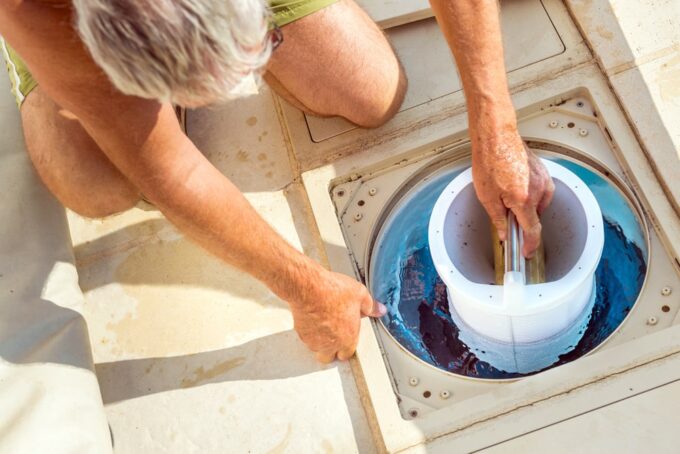
Source: poolsbydesignaz.com
If you live in a region where pools are closed for the winter, properly winterizing your debris catcher is crucial. This involves thoroughly cleaning it and ensuring it’s free of water to prevent freezing and cracking.
Professional Inspection and Maintenance
While DIY maintenance is important, having a professional inspect and service your filter annually can prevent major issues and extend the life of your filter.
Your pool’s environment isn’t static; it changes with the seasons, usage, and even the weather. These changes can affect your filter’s performance. For example, heavy usage during a pool party or an influx of leaves and debris after a storm may require more frequent cleaning. Stay attuned to these changes and adjust your filter maintenance accordingly.
Avoiding Common Mistakes
Even with the best intentions, pool owners can make mistakes that compromise their filter’s efficiency. One common error is over-cleaning, especially with cartridge filters, which can cause wear and tear. Another mistake is ignoring the manufacturer’s instructions on care and maintenance. Always refer to the manual for specific guidance.
Using Pool Clarifiers and Flocculants
Sometimes, despite a well-maintained filter, your pool water might still lack clarity. In such cases, pool clarifiers or flocculants can be used. These chemicals help clump smaller particles together, making it easier for the filter to trap them. However, use these products sparingly and according to the manufacturer’s instructions.
Managing Water Level and Circulation
The water level in your pool can impact the filter’s performance. If the water is too low, the pump may draw in air, which can damage the system. Ensure the water level is halfway up the skimmer opening for optimal filtration. Also, proper water circulation is key. Run the pump long enough each day to ensure the entire volume of water is filtered.
Understanding Backwash Frequency
For sand and DE filters, there’s often confusion about how often to backwash. Over-backwashing can waste water and disturb the filter bed or DE coating, reducing the filter’s effectiveness. Only backwash when necessary, as indicated by the pressure gauge or when you notice a decrease in water flow.
Replacing Filter Media
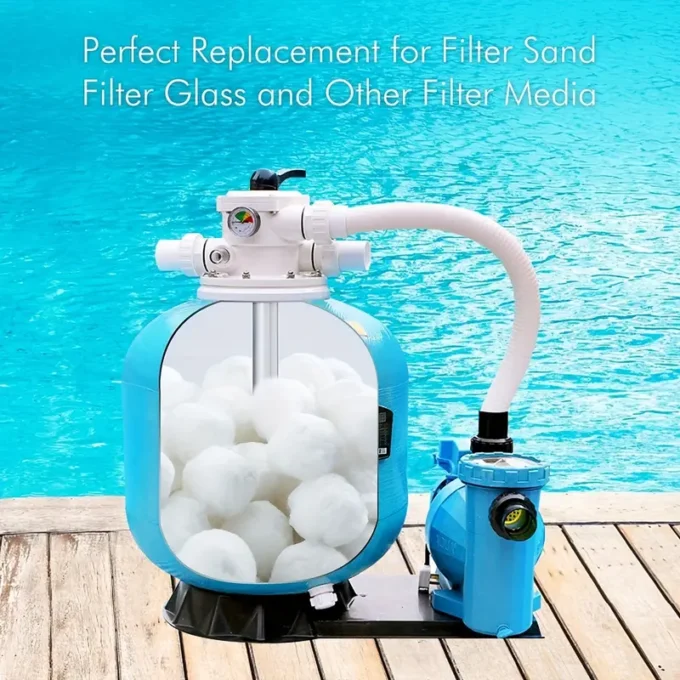
Source: temu.com
Filter media, whether it’s sand, cartridges, or DE powder, doesn’t last forever. Sand typically needs replacing every 5-7 years, while cartridges may need replacement every 2-3 years, depending on usage and care. DE grids also need periodic replacement. Keep track of their age and condition.
End Note
In conclusion, your pool’s filter is a vital component in maintaining water clarity and quality. By understanding your filter type, adhering to a regular maintenance schedule, and responding promptly to changes in pool conditions, you can enjoy a clean, clear, and inviting swimming pool.

